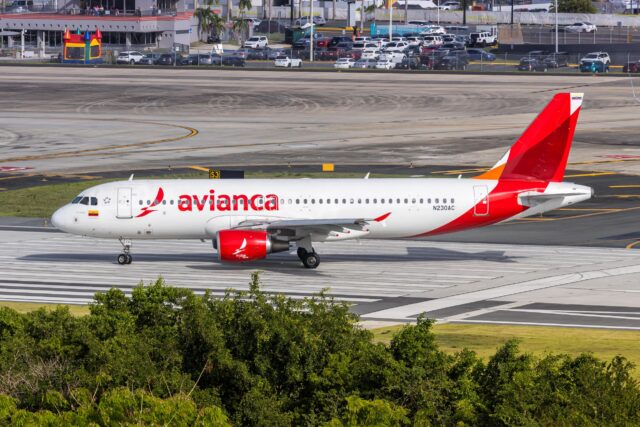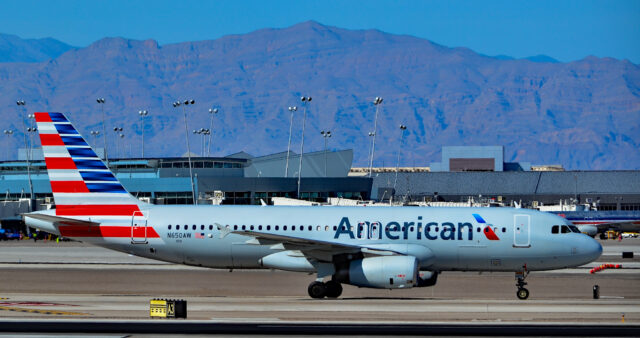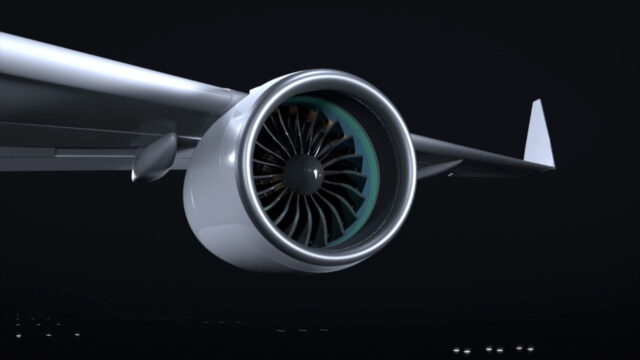Meet PBY Catalina ‘Miss Pick Up’ – one of the world’s last great flying boats

October 5, 2025

Flying boats once led the way in pioneering aviation. However, it has become increasingly hard to see one in the skies these days. Having spent the 1930s and 1940s opening up the first intercontinental passenger flights, their numbers are nowadays down to just a handful. Yet, a few large flying boats still exist to keep the bygone era of flying boats alive.
One such example is based in the UK and spends the summer months touring Europe and thrilling air show crowds. The PBY Catalina, registered as G-PBYA (affectionately known as ‘Miss Pick Up’ to its crews and supporters), is about to mark the 82nd anniversary of its first flight.
Out of the 3,305 Catalinas that were built during the Second World War, just ten remain airworthy. Miss Pick Up is the only flying example in Europe, despite many hundreds being operated by the Royal Air Force and the Netherlands Navy during the war.
Despite its age and vintage status, Miss Pick Up still makes regular appearances at airshows across Europe, drawing crowds and welcoming the public on board to see what rudimentary wartime air warfare was like back in the 1940s.
Introducing Miss Pick Up
In summer 2025, Miss Pick Up completed its 21st air show season, appearing at over 20 events and welcoming thousands of visitors who stepped on board to look around.
However, with winter looking ahead, the aircraft is about to return to its annual hibernation, undergoing a meticulous maintenance schedule to prepare it for 2026 and next year’s air show appearances.

Aerospace Global News takes a unique look at the PBY Catalina flying boat and at Miss Pick Up in particular, analysing exactly what it is that makes flying boats so enigmatic and still able to capture the public’s imagination.
The origins of the PBY Catalina
The PBY Catalina series of flying boats was originally conceived in the 1930s to meet an emerging US Navy requirement for a patrol bomber flying boat. The San Diego-based aircraft manufacturer Consolidated, which had previous experience producing earlier flying boat models, presented a new design for consideration by the Navy’s top brass.
The ‘PB’ of the aircraft’s nomenclature stood for ‘patrol bomber’ while ‘Y’ was the designated letter to denote Consolidated as the manufacturer, as the Curtiss Aircraft Company had already taken the ‘C’ prefix.
The design, originally known as the Consolidated Model 28, featured a hull-shaped lower fuselage with its twin piston engines mounted on the leading edge of the high wing above. The provision of stabilizer floats at the ends of each wing, which could be retracted for streamlined flight, added to the design’s efficiency.

First flown on March 21, 1935, the new aircraft commenced service trials with the US Navy, leading to numerous design adjustments before the Navy ordered 60 examples in June 1935. The first of these, known as the PBY-1, was delivered to them in October 1936.
Service history of the PBY Catalina
By April 1939, the model had been upgraded several times. The US Navy continued to order increasing numbers of aircraft, including 50 PBY-2s and 66 PBY-3s.
The last of 33 PBY-4 variants to be rolled out was fitted with amphibious landing gear for the first time, to increase the type’s versatility and enable it to operate from land-based runways, as well as for waterborne operations.
This new amphibious model eventually became known as the PBY-5A. However, while the PBY flying boats served the US Navy well, not least by seeing action at Pearl Harbor, they were eventually earmarked for retirement.
As the war in the Pacific turned in the US’s favour, the fleet began to be wound down, and more modern replacements for the type (such as the Grumman Albatross) became available.
The PBY-5 proved to be particularly popular with military operators outside the US (although the US Navy did eventually order 200). Its adaptability, plus its renowned ability to operate very long-range missions (up to 18+ hours) without refuelling, were huge selling points for the Catalina.
Following evaluation, the UK’s Air Ministry initially ordered 50 PBY-5s, which helped to revitalize production at Consolidated.
It was with this order of PBY-5s, destined for the Royal Air Force (RAF), that the aircraft was given the nickname ‘Catalina’ for the first time, named after an island off the coast of California close to San Diego, and a name that even the US military went on to adopt officially.

Other air forces worldwide also placed orders for Catalinas, with the Royal Canadian Air Force (RCAF), Royal New Zealand Air Force, the Netherlands Navy, and the Royal Australian Air Force leading the charge.
Production spreads as demand increases
The RCAF order necessitated the opening of a second production line, operated under license by Canadian Vickers at its assembly plant in Cartierville, Quebec. Notably, Catalinas produced by Canadian Vickers were given the alternative moniker of ‘Canso’ rather than Catalina.
Boeing Aircraft of Canada Limited also built Catalinas at its plant in Vancouver under license from Consolidated for the US Navy, the RAF, and the RCAF.

In all, 379 aircraft were built in Canada out of the 3,305 Catalinas built in total in the US, Canada, and even the Soviet Union. Of this total production run, 1,428 were built as amphibious examples with fully extendible/retractable landing gear, whereas the remaining 1,877 remained water-borne (although they could be towed onto land via dollies for maintenance and repair).
A multi-role and versatile aircraft
In the main, the type carried on its role of maritime patrol, characterized by long, monotonous sorties without sighting land or enemy, although others were used as patrol bombers (primarily to destroy enemy submarines with depth charges mounted under the wings), reconnaissance and surveillance, coast guard duties, general cargo transport, and troop relocation missions.
The Catalina served with distinction throughout the Second World War and was involved in many significant incidents, including the locating of the German battleship ‘Bismarck’, the sighting of the Japanese invasion force heading for Ceylon (now Sri Lanka), and many individual actions against U-boats and submarines.
Two Victoria Crosses were awarded to RAF Coastal Command Catalina captains, one of whom, John Cruickshank, passed away aged 105 in September. In all, the RAF operated around 700 Catalinas during its wartime service.
Catalinas in the post-war period
The vast majority of Catalinas were scrapped after the war, as their primary role in protecting allied forces from enemy submarines had been fulfilled. However, a number found new lives in the commercial sector, mostly the amphibious examples, although many of them would never operate off the water again.
The Catalina’s new roles varied from passenger and freight transport (Catalinas flew passenger flights for both Qantas and Cathay Pacific in the post-war years), while others went into specialized roles such as aerial survey, firefighting, or aerial spraying.

Out of the 3,305 Catalinas built in total, it is quite remarkable that only ten remain airworthy worldwide, although there are several undergoing restorations around the world.
Almost all surviving examples reside in the US and Canada, although there are three in Australia that do not fly. Miss Pick Up remains the sole survivor in Europe, flying the flag for both Catalinas and flying boats in general in this part of the world.
The background to Miss Pick Up
Since 2024, Miss Pick Up has resided at the Imperial War Museum airfield at Duxford in Cambridgeshire. However, in her 82-year flying career, the aircraft has performed a variety of roles and has served in various parts of the world.
The plane was originally ordered for the RCAF as a ‘Canso A’ amphibious Catalina, based on the US Navy PBY-5A variant. The plane was built by Canadian Vickers at Cartierville, Quebec, and first flew in October 1943.

Records show that the aircraft entered service on October 27, 1943, carrying tail number 11005, initially from Bella Bella on the British Columbia coast between Vancouver and Prince Rupert, on day and night patrols to keep watch for enemy submarines approaching the western seaboard.
Towards the end of the war, with the threat of a Japanese invasion of Western Canada largely over, 11006 was no longer required in its original capacity, and it entered a period of storage until it was converted to a freighter in 1948.
It was then redeployed by the RCAF one last time to fly search-and-rescue missions from Sea Island, Vancouver. It was finally struck off military service on May 25, 1961, having entered storage at Vulcan, Alberta.
Reborn as a fire-fighting aircraft
The aircraft was subsequently sold to the commercial sector, having had both its bow turret and side blisters removed as part of its post-war conversion. It was at this point that the plane began a new lease of life as a firefighting waterbomber.
Having been allocated the civil registration CF-NJF (later, C-CNJF), the aircraft operated in this role for many years, fighting forest fires across Canada using fleet number 14.

During the time, CF-NJF was also chartered to the French operator Protection Civile, based in Marseille, flying several firefighting seasons during the mid-to-late 1960s in the south of France. In 1974, it joined Norcanair, a firefighting company based at Prince Albert in Saskatchewan.
Around 1980, it was taken on by the Province of Saskatchewan, which continued to use it as a water bomber, alongside other Catalinas, alongside the ubiquitous Canadair CL-215.
By the late 1990s, the Saskatchewan-based Catalinas had been disposed of, and two of them (including C-CNJF) were sent to storage in St Thomas, Ontario, with their ultimate fate uncertain.
A future adventure in Africa?
C-FNJF escaped being scrapped and was partially reprieved when it was taken on by another commercial operator, Catalina Aero Services, based in Nanaimo on Vancouver Island.
There, it was to be repurposed as a passenger-carrying aircraft for tourist flights and air safaris in Zimbabwe in southern Africa.
For this purpose, the aircraft had its water tanks removed and a hydraulic under-tail integrated airstair installed, along with a 14-seat passenger interior and spectacular rear one-piece Perspex blisters for unrivalled panoramic views of the passing landscape.
Sadly, this venture never actually got off the ground, and C-FNJF was once more put up for sale, spending some time being stored in the open, where it was left to the elements. When advertised for sale, the particulars for C-FNJF stated that the airframe had by this point flown for 12,829 hours.
Miss Pick Up arrives in the UK
In time, the aircraft was purchased by Plane Sailing Air Displays Limited, a UK-based organisation whose mission was to keep the wartime legacy of Catalina flying boats alive by flying a single example at air shows and other events, both within Europe and further afield.
With its sound airframe, plus the added benefits of a fully installed passenger cabin viewing blisters and airstair, C-FNJF was found to be the ideal candidate.
Once the decision to acquire C-FNJF was made, there followed a long period of work on the aircraft to make it ready not only for the long ferry flight to the UK but also for ongoing operations.
This process became protracted, as various modifications made to the airframe required clearance by the Canadian regulator Transport Canada.

Eventually, however, all was ready and, following a period of test and familiarization flights, C-FNJF left Nanaimo on March 1, 2004. During the following month, the delivery route took in several US states before entering Canada again and then crossing the Atlantic.
C-FNJF reached Shannon, Ireland, in the early hours of March 30, 2004, before flying the last leg to the UK a few hours later to be met by a small band of dedicated crew, supporters, and representatives from the aviation press, radio, and television reporters.
Following its arrival at Duxford, entered a period of overhaul and preparation for the British registry as G-PBYA, being re-registered as such on November 19, 2004. The plane was also repainted into the colours of the US Army Air Force (USAAF), which it still retains to this day.

The chosen colour scheme is in commemoration of USAAF Catalinas that were based at RAF bases in the East of England in WW2. Their mission was to rescue downed US aircraft that had ended up in the North Sea due to air combat, with one in particular being allocated the appropriate name ‘Miss Pick Up’ by its crew.
Miss Pick Up today
Displaying at over 20 events across Europe between the months of May and October each summer, Miss Pick Up still draws the public’s attention wherever it appears.
Given its widespread popularity as one of the world’s last wartime flying boats, the plane even has its own fan club, The Catalina Society, which has around 700 members worldwide.

With the aircraft appearing at a variety of airshows each year, it performs short aerial displays, which exhibit its classic lines. Meanwhile, while on the ground, its volunteer crews welcome visitors on board wherever possible, providing an insight as to how Catalina crews survived the War flying ultra-long night-time missions.
During 2025, the aircraft attended numerous major air shows as well as making special appearances for some major commemorative events, as 2025 marked the 80th anniversary of VJ Day. The summer also featured private events, viewings, and, of course, crew training sorties.
The 2025 air show season in review
Summer 2025 kicked off on 10 May with a fly-in display event at the aircraft’s home base at Duxford Airfield in Cambridgeshire. That was followed by a similar event at Duxford in early June.
Regrettably, two air show appearances elsewhere in the UK planned for June were postponed until 2026 due to unforeseen circumstances related to the organisation of those air shows.
In July, the aircraft headed to Belgium for an appearance and display at the Belgian Aerobatics Championships held in Koksijde, followed by a positioning flight to France, where it displayed at the Roissy-Mieux Air Show near Paris on 7 July.

From 16 to 21 July, Miss Pick Up became a leading attraction at the Royal International Air Tattoo 2025, based at RAF Fairford in the UK. The event is one of the world’s leading air shows with both military and civil display teams from across the world taking part, along with tens of thousands of visitors.
The month of July closed out with an appearance at the American Flying Day at Duxford.
August 2025 began with displays at the two-day Blackpool Seafront Air Show in the UK, followed by a trip to the Netherlands in the middle of the month.
August 15 marked the anniversary of VJ Day, and to mark the occasion, Miss Pick Up was asked to perform a flyby at a memorial located in The Hague for all the Dutch armed forces personnel who lost their lives while serving in the Dutch East Indies during the war.
The event, which was televised worldwide, was attended by the King of the Netherlands, himself a qualified pilot.

August continued with a summer evening display at Duxford, followed by a display at a special event at RAF Syerston in Nottinghamshire. The month ended with an appearance at the weekend-long Victory Show at Cosby in Leicestershire.
As the season tailed off for 2025, in September, Miss Pick Up put in appearances at the annual Battle of Britain commemorative air show at Duxford, along with appearances and displays at the Jersey Air Show in the Channel Islands, followed by a weekend-long attendance at the Lee Victory Festival at Lee-On-Solent on the south coast of the UK.

The current air show season will conclude for Miss Pick Up with the Duxford Flying Finale due to be held on Saturday, October 4.
The future for Miss Pick Up
With a dedicated team of 60 people made up of volunteers, engineers, pilots, and support staff, it is hoped that Miss Pick Up will continue flying for many years to come.
After all, there are virtually no aircraft left on the European air show circuit where the public can step on board and look around the aircraft, then watch it perform a flying display later that same day – a truly unique proposition.
Although the heydays of vintage flying boats may be long gone, it is now up to Miss Pick Up and her few remaining sisterships to keep the legacy alive and act as a reminder to future generations of how we used to fly.

Earning respect and bringing smiles to all those who see her fly, Miss Pick Up, despite her vintage, will hopefully continue to perform displays with grace and style for many years to come.
Her unique shape and iconic lines not only act as a reminder of a bygone era of aviation but also serve as an airworthy and flying memorial to all those who flew Catalinas in WW2.
The future is by no means certain for Miss Pick Up, with rising fuel costs and maintenance fees. However, with the support of its team of volunteers, the Catalina Society members, and to all those who offer Miss Pick Up financial support, long may she continue to draw the crowds.
Note: Aerospace Global News would like to thank David Legg of The Catalina Society for his assistance with the historical details featured in this article. For all inquiries relating to the purchase of ownership shares in Miss Pick Up, David can be contacted via email at pby5@btinternet.com.
















